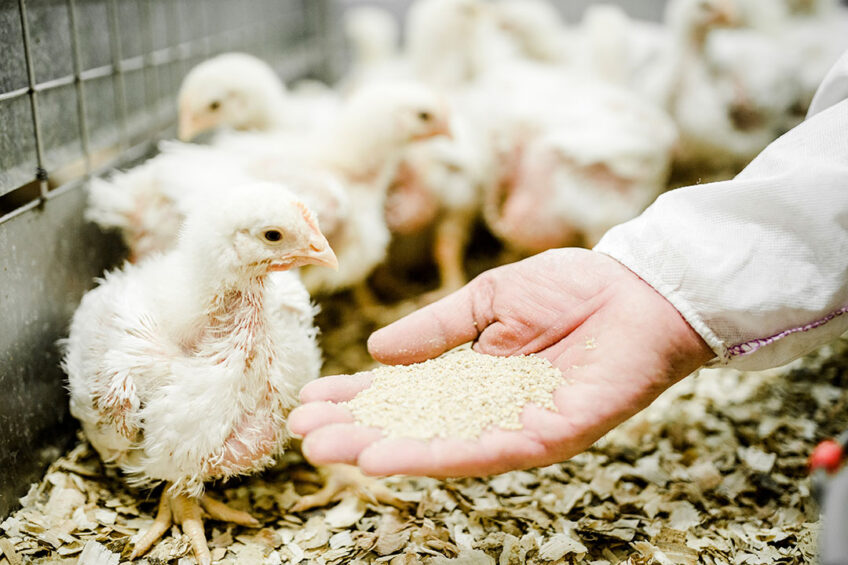Plant-based feed additives mitigate harmful gases from farms

The planet’s high global emissions and greenhouse gas (GHG) concentrations are due to human activities. With agriculture being the third largest contributor to greenhouse gas emissions, such as carbon dioxide (CO2), ammonia (NH3) and methane (CH4), emission reduction is a concern for us all.
We have all heard about the dangers of greenhouse gas emissions and how they can contribute to climate change. We therefore need to be aware of the importance and urgency of reducing this threat to our planet’s unique ecosystem and biodiversity. However, we should not think that responsibility for reducing environmental impacts lies only with governments and large industries. It’s all too easy to overlook our own responsibilities.
Through our daily choices and actions as individuals, in both our personal and professional lives, we have the potential to have an effect globally. It may seem strange, but if many of us start to act locally, our actions will become part of a chain reaction with a much broader impact.
Impact of ammonia
Aerial ammonia (NH3) is considered a threat as it affects the immediate surroundings of the emission source. When released to the atmosphere, it is converted to ammonium and ammonium salts, contributing to the acidification of soils and water. Ammonia emissions from livestock originate mainly from the animal’s manure, impacting the animals and workers indoors, firstly, and subsequently the atmosphere when released or ventilated from the animal housing or generated by the manure storage used as field fertiliser.
SUSTAINABILITY: Poultry World edition 9 of 2021 now online
This 9th edition of Poultry World highlights sustainability in the poultry sector. At AgriVision 2021, it was asked if it is possible to sustainably feed 10 billion people by 2050. The edition also looks at effective ventilation, how to formulate broiler feeds under economic pressure, reducing environmental impact with protease, and in-ovo technology in broiler production. Read the edition here.
Scientifically speaking, ammonia is formed from the breakdown of urea which occurs in large amounts in the animal’s manure. An enzyme called urease is the mediator of this process and faecal bacteria its primary source. Urea breaks down into ammonia and carbon dioxide. Ammonia can remain stable in the liquid fraction of the manure under certain conditions, like low pH and temperature.
Ammonia emissions can occur easily
However, its volatilization (emission) can occur easily and frequently. When the aerial concentration of ammonia increases indoors, both animals and workers are affected. Ammonia is a colourless gas with a pungent smell, potentially toxic, corrosive, and is an irritant. This substance easily binds with dust particles in the air and can rapidly spread to and accumulate in the respiratory tract causing cilia loss and impairing mucosal cleaning. Frequent exposure to ammonia causes irritation and damages the respiratory tract mucosa, increasing susceptibility to disease and diminishing animal performance and welfare.

Act at the source
There are known strategies to mitigate ammonia formation and emissions. These range from building and slurry pit design, ventilation, air-washing systems and slurry management, to nutritional manipulations and additives provided via the feed, such as phytogenics that can have an important and beneficial effect in this context.
Acting at farm level – at the emission source – is an excellent option, helping to reduce ammonia emissions to the atmosphere, improving animal and worker welfare, as well as reducing animal disease and performance losses.
Feed additives
Plant-based feed additives have proven to have a positive effect in terms of reducing ammonia emissions. These plant bioactive compounds improve the animal’s ability to digest, absorb and retain dietary nitrogen content. As a result, less nitrogen is excreted (lost) in the manure, meaning that there is also less urea and undigested faecal protein content in the waste. Consequently, fewer nitrogen substrates are available to be converted into ammonia. Furthermore, specific phytogenic compounds can act directly on the manure by inhibiting urease activity, which leads to low urease action and so less urea is broken down to produce ammonia.
Benefits of seaweed-based pellet binders in broiler diets
High-quality pellets withstand rough handling. A study has shown that the use of binding agents from natural sources like seaweed not only help achieve the desired pellet quality but also improve bird performance. Read more…
Tried and tested phytogenic feed additives
In a long-term study at the Performing Nature Research Center, a research institute in the Czech Republic owned by Delacon, various in vitro and in vivo experiments were conducted to acquire new data on the effects of phytogenic compounds in terms of mitigating gas emissions. Promsing results were seen with both broilers and pigs.
Measurements carried out with animals housed in 12 identical hermetically-sealed enclosures with their own climate system showed that although the ammonia output increased quickly in the grower phase, it was possible to inhibit its development through phytogenic feed additives. In this long-term study in broilers, the ammonia concentration remained at an average level without any adverse effects on animal performance. The result was a 35% reduction in ammonia on day 35 and a 24% reduction over the whole cycle (Figure 1).

All-round gains of phytogenic bioactive compounds
Phytogenic bioactive compounds provide natural and effective solutions for mitigating ammonia emissions originating from poultry and pig production. It offers a win-win situation which ensures animal, worker and environmental welfare, whereby animal performance is maintained or even improved while reducing the risk of ammonia-related respiratory diseases. By acting locally, producers play an essential role in reducing the atmospheric release of ammonia globally and thus contribute to a less polluted and healthier planet.
By Manu De Laet and Sandra Chamusco, Delacon












